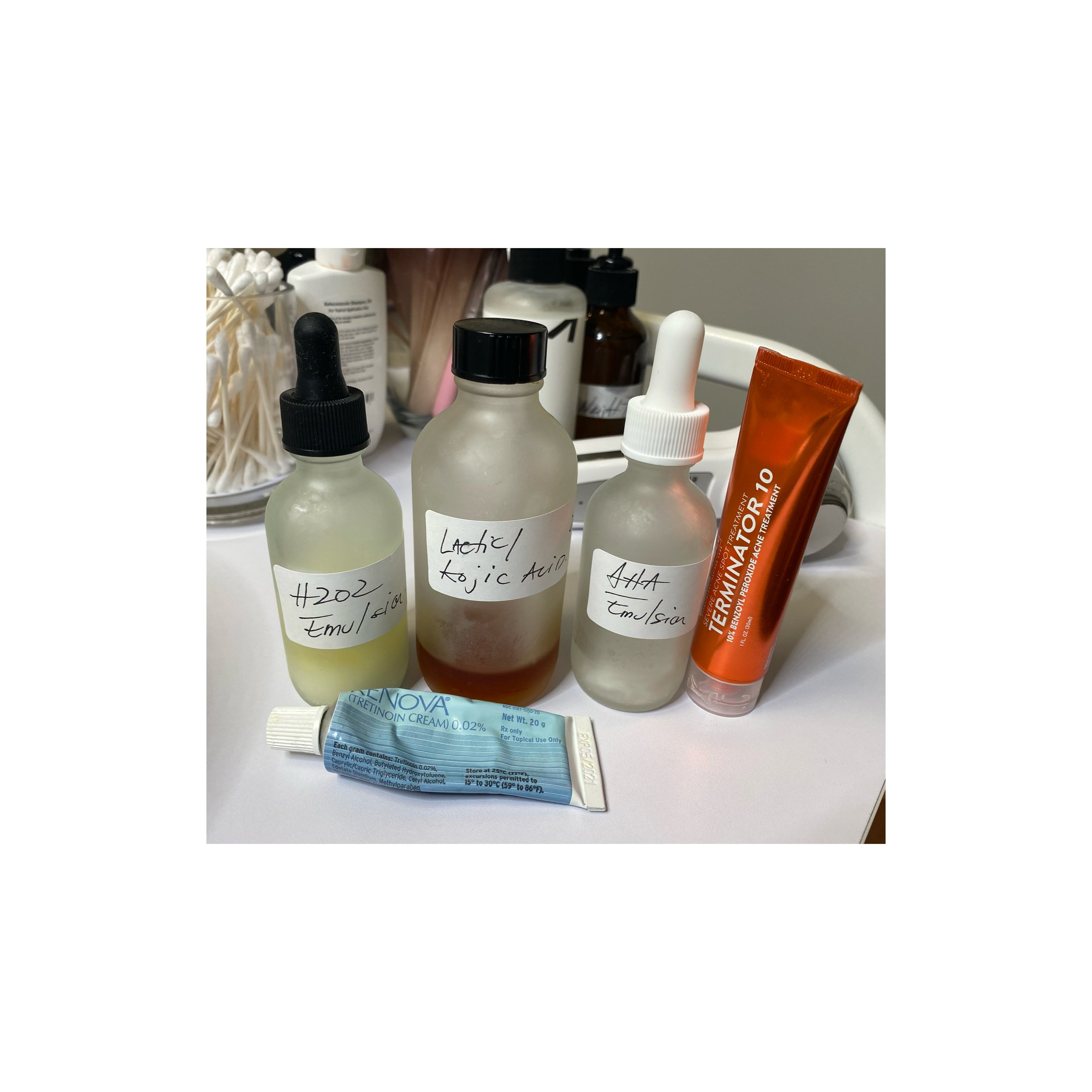Protecting your skin barrier.
Anyone into skincare these days most likely has a handful of corrective products.
Corrective products are intended to fix or rid the skin of ailments such as acne and congestion, dead skin build up, discoloration and uneven texture.
Examples of what would be considered corrective would be:
retin-a
alpha hydroxy acids
beta hydroxy acids
benzoyl peroxide
hydroquinone
niacinamide
and some vitamin c’s
Those are some of the more common corrective ingredients.
Corrective skincare has been the focal point of skincare brands for a significant period of time now. Because of this, as consumers, we are now experiencing an indefinite and significant compromise of our skin’s barrier. The overuse of correctives is causing irritation, inflammation and chemical burns which result in dry, red and tender skin. In more acute cases, there can be an onset of periorbital and/or perioral dermatitis.
There is a methodical approach that will lead to success when using corrective ingredients.
Intermittent use, and the ‘less is more’ mindset is key. When instructing my clients on how best to use these products, the direction is as follows:
Apply Sparingly for best results; start with a half-a-pea size mixed into a neutral moisturizer or serum. Corrective ingredients are potent and migrate!
No more than 2 corrective products in your am/pm regimen at once (this does not include spot treatment).
When initiating the use of correctives, start application with 2 days per week only. You can slowly work up to 4-5 days per week. This increase should happen slowly, over the course of 3-4 weeks. If at any point your skin begins to feel ‘compromised’, take a break from use, let your skin return to its normal state then restart.
Spf should be worn daily when using a corrective regimen.
A neutral, calming serum or moisturizer should always be on hand and implemented into your regimen when using correctives, as it will help balance and maintain a healthy pH level for your skin.

